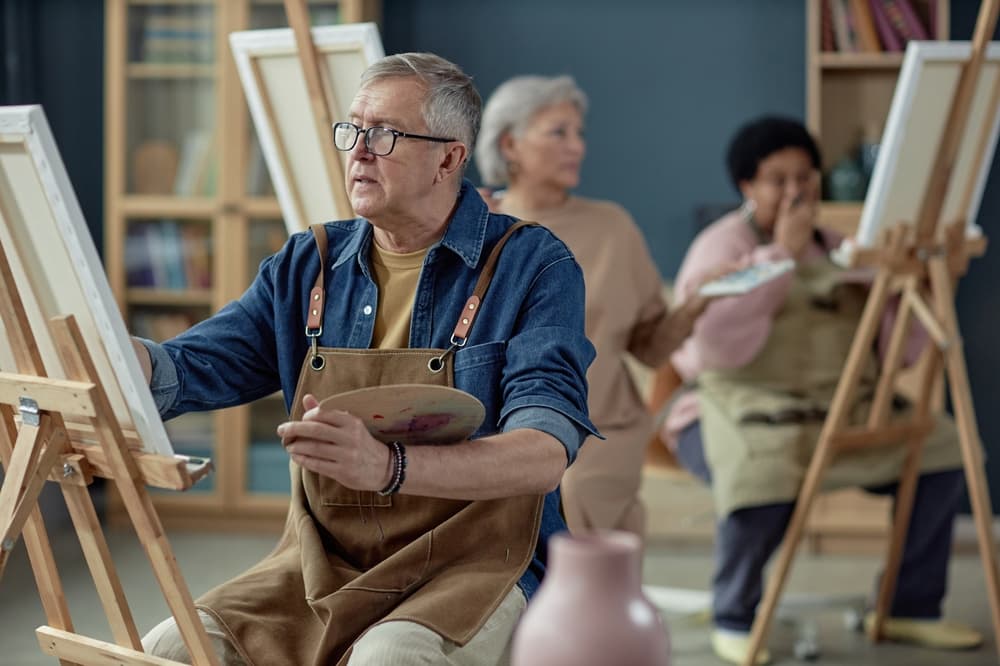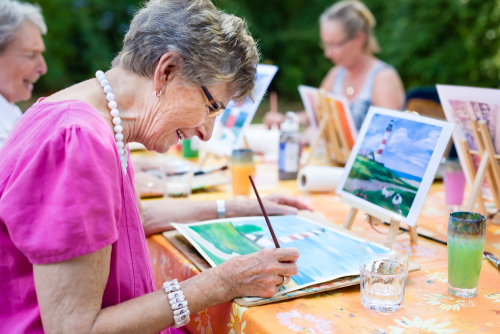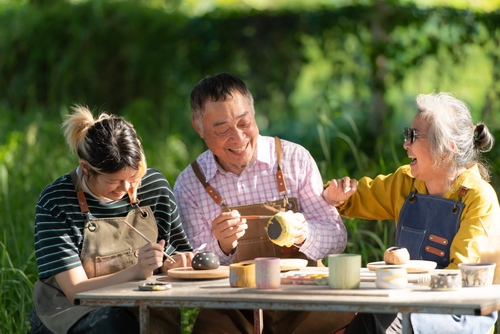
Art is more than just a hobby. It’s a powerful tool for improving mental and physical well-being. For older adults, art therapy provides a creative outlet that can boost emotional health, enhance cognitive skills, and even improve physical dexterity. Whether it’s painting, sculpting, or drawing, art offers numerous benefits for the elderly.
Art therapy is specifically designed to use creativity as a therapeutic practice. It’s not about creating a masterpiece but about engaging in the process, which can have transformative effects. It doesn’t matter whether your aging loved one in Cheviot Hills already does this as a part of senior home care or is just getting interested in the activity. We’ll dive into why art is so beneficial for the elderly and how art therapy goes beyond traditional activities to improve their quality of life.
Why is art good for the elderly?
Here’s why art can be beneficial for the elderly:
Encourages self-expression
Art allows older adults to express themselves in unique and meaningful ways. For the elderly who may struggle with verbal communication, especially those with conditions like dementia, creative activities provide a non-verbal outlet to share feelings and experiences.
Self-expression through art also fosters a sense of individuality and identity. At a time when the elderly may feel like their independence is diminishing, creating art serves as a reminder of their capabilities and unique perspectives.
Boosts emotional well-being
Engaging in art has been shown to reduce anxiety, alleviate depression, and enhance overall mood. The process of creating something new fosters a sense of purpose and pride, which can significantly improve the quality of life.
This is particularly important for aging individuals experiencing loneliness, as art becomes a comforting and enjoyable activity.
Beyond the individual, art often brings joy to others as well. Sharing their creations with family or friends adds a layer of connection and recognition, enhancing emotional well-being even further.
Improves cognitive function
Art activities stimulate the brain, helping to maintain cognitive abilities. Activities like sketching or crafting require focus, planning, and problem-solving, all of which can slow cognitive decline and keep the mind sharp. For aging individuals who enjoy puzzles or strategy games, art can be a similarly engaging challenge, fostering creativity alongside critical thinking.
Promotes physical dexterity
Fine motor skills can diminish with age, but creating art, whether it’s holding a paintbrush or shaping clay, helps the elderly maintain and improve hand-eye coordination and motor abilities. Repeated actions involved in artistic activities also build muscle memory, which can be beneficial for tasks beyond the art studio.
How does art therapy help adults?
Art therapy has a number of benefits for older adults:
Therapeutic benefits for emotional health
Art therapy, guided by trained professionals, focuses on using creative expression as a form of healing. For older adults coping with grief, loneliness, or chronic illnesses, art therapy provides a safe space to process emotions. It’s not about the end result, but the act of creating and what it unlocks emotionally.
This therapeutic approach helps reduce stress and build emotional resilience, offering older adults tools to cope with life’s challenges. For those facing mental health concerns, it’s a way to explore and understand emotions in a non-verbal and non-judgmental environment.
Social connection and engagement
Group art therapy sessions encourage social interaction, which is essential for mental health. Many older adults experience isolation, but participating in art activities with others fosters connection and a sense of belonging.
These interactions create opportunities to share stories and bond over common experiences, building relationships that extend beyond the therapy sessions.
Support for memory and cognition
Art therapy has shown promise in supporting those with Alzheimer’s or other forms of dementia. Creative activities engage multiple parts of the brain, helping improve memory recall and focus. For example, painting or drawing can evoke memories and spark meaningful conversations with loved ones or caregivers.
Additionally, the repetition and structure within art therapy can help individuals with memory impairments feel more grounded and connected to the present moment.
Encouragement of lifelong learning
Art therapy introduces new techniques and skills, reminding older adults that learning doesn’t stop with age. Exploring different mediums and styles keeps the mind engaged and curious, fostering a sense of growth and accomplishment. The elderly often discover talents they never realized they had, which brings immense satisfaction and confidence.
Where in Cheviot Hills and the surrounding area can I find dependable senior home care?
Looking for compassionate caregivers who value creativity and emotional health? A Better Way In Home Care connects families to experienced professionals who can encourage art therapy and assist with daily care. There are various other activities that can enrich your aging loved one’s life, including guided strength training or volunteering for a cause they care about.
Caregivers can encourage your aging loved one to find what works for them, and also help with other things like light cleaning and decluttering, walks, personal care and more. Whether your aging loved one lives close to Hillcrest Country Club or in another part of Cheviot Hills, we can match you with the right caregiver. Let us help your aging loved ones thrive. Contact us today to get started!











